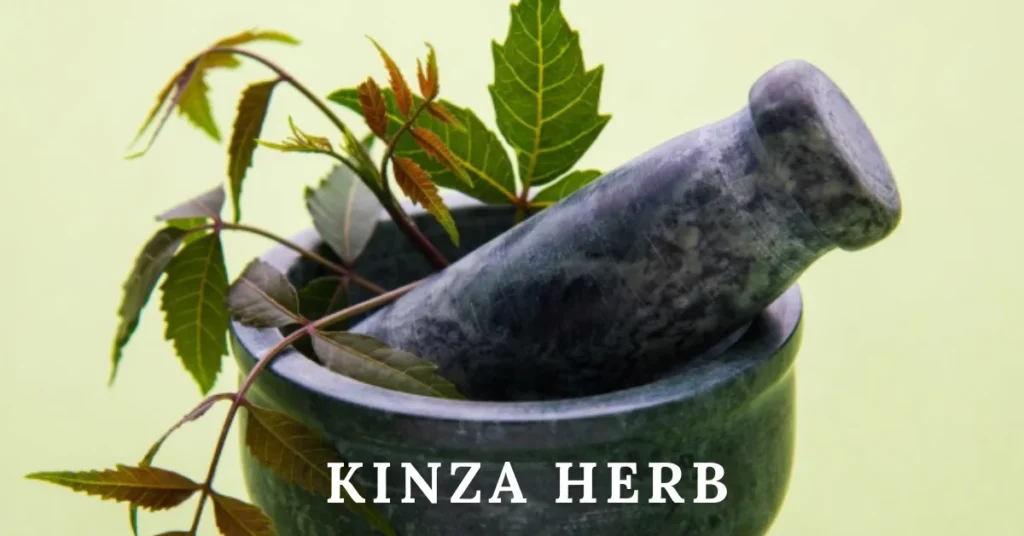Introduction to Kinza Herb
What is Kinza Herb?
Kinza herb, often known by its regional names in various cultures, is a leafy green plant that has been used for centuries in traditional medicine and cooking. It’s known for its aromatic flavor, subtle bitterness, and wide-ranging health properties.
A Quick Look at Its Origins
Native to regions in South Asia and the Middle East, kinza herb has roots in ancient civilizations. It’s been documented in Ayurvedic texts and Middle Eastern herbal manuscripts as a staple healing plant.
Why It’s Gaining Popularity Again
In recent years, the wellness community has reignited interest in traditional herbs—and kinza is riding that wave. With people shifting towards organic and plant-based remedies, this herb is becoming a household name once again.
Traditional Uses of Kinza Herb
Healing in Ancient Cultures
In ancient Persia, kinza was brewed as tea to ease fevers. In India, it was crushed and mixed with oils to treat skin rashes and wounds. From Africa to Asia, it held a sacred place in traditional healing.
Common Folk Remedies Featuring Kinza
Used in poultices, stews, and teas, kinza was often part of everyday life. Mothers brewed it for colicky babies, elders used it for aching joints, and travelers took it to fend off infections.
Kinza in Traditional Herbal Medicine
Traditional systems like Ayurveda and Unani regard kinza as a “cooling” herb that balances body heat, aids digestion, and purifies the blood.
The Science Behind Kinza
Nutritional Components
Kinza is packed with vitamins A, C, and K. It also contains essential minerals like potassium, calcium, and magnesium. It’s more than just flavor—it’s nourishment.
Active Compounds and Their Functions
Phytochemicals in kinza, such as flavonoids and alkaloids, are responsible for its healing power. These compounds fight oxidative stress and reduce inflammation.
Current Scientific Research
Studies have shown kinza’s potential in lowering blood sugar and cholesterol levels. Ongoing research is investigating its antimicrobial and anti-cancer properties too.
Health Benefits of Kinza Herb
Anti-Inflammatory Properties
Thanks to its flavonoid-rich profile, kinza helps combat internal inflammation—a silent culprit behind many chronic illnesses.
Digestive Support
Kinza stimulates digestive enzymes, making it a go-to remedy for bloating, indigestion, and poor appetite.
Immune System Boost
Its natural antioxidants strengthen immune responses and help the body fend off infections more effectively.
Skin Health & Antioxidants
The herb’s vitamin C content helps in skin rejuvenation. Applied topically, it can soothe irritation and reduce redness.
Kinza in Modern Wellness Practices
How It’s Used in Teas, Tinctures, and Capsules
From calming teas to high-potency capsules, kinza is making waves in modern wellness aisles. It’s easy to integrate into any routine.
Kinza in Aromatherapy
Its essential oils are used in aromatherapy to reduce stress and promote relaxation.
DIY Recipes with Kinza Herb
You can make homemade kinza salves, tonics, and bath infusions. A simple kinza tea with lemon and honey is a refreshing wellness drink.
Potential Side Effects and Cautions
Not for Everyone – Who Should Avoid It
Pregnant women, individuals with low blood pressure, and people on certain medications should consult a healthcare provider before using kinza.
Interactions with Medications
Kinza may interact with anticoagulants, diabetes meds, and blood pressure drugs. Always check with a doctor.
Dosage Guidelines and Overuse Risks
Moderation is key. Overuse can cause dizziness, digestive upset, or skin sensitivity in rare cases.
Kinza vs. Other Popular Herbs
How It Compares to Turmeric, Mint, and Basil
While turmeric is famed for pain relief, mint for digestion, and basil for calming, kinza offers a unique blend of these benefits. It’s a multitasker.
Synergistic Blends: Kinza with Other Herbs
Pairing kinza with ginger or turmeric can amplify anti-inflammatory effects. It’s a great team player in herbal formulas.
Cultivating Kinza at Home
Ideal Growing Conditions
Kinza loves sunshine and well-drained soil. It’s relatively easy to grow in pots or garden beds.
Harvesting and Storing for Maximum Potency
Pick the leaves before flowering for best flavor. Dry in a cool, dark place and store in airtight jars.
Cultural and Spiritual Importance
Kinza in Rituals and Beliefs
In some cultures, kinza is burned in rituals to cleanse spaces or worn as an amulet for protection. It’s more than just medicine—it’s tradition.
Its Symbolism in Ancient Texts
Historical texts often associate kinza with purity, healing, and divine energy. It was revered by shamans and sages alike.
The Commercial Boom of Kinza Products
From Local Markets to Global Shelves
Thanks to online wellness shops, kinza is now available globally—packaged in teas, oils, and even skincare.
Ethical and Sustainable Sourcing
As demand rises, it’s important to source kinza from farms that use sustainable and ethical practices to preserve its quality and ecosystem.
Myths and Misconceptions
Debunking the “Cure-All” Label
While kinza has many benefits, it’s not a miracle cure. Balanced usage and realistic expectations are key.
Marketing Hype vs. Real Benefits
Some brands exaggerate claims. Always look for third-party testing and real user reviews before buying supplements.
How to Incorporate Kinza Herb Safely
Best Practices for Beginners
Start small—maybe a tea or light sprinkle in food. Gauge how your body reacts before going full herbalist.
Combining Kinza with Your Wellness Routine
Pair it with yoga, meditation, or a healthy diet for a holistic approach to wellness.
Expert Opinions
What Herbalists and Nutritionists Say
Most agree kinza is a beneficial addition to a health-conscious lifestyle—when used appropriately and with medical guidance if needed.
Insights from Holistic Doctors
Holistic practitioners praise kinza for its gentle but effective properties. They often use it in detox programs and stress-relief blends.
conclusion
Kinza herb bridges the gap between ancient wisdom and modern science. Its versatility, health benefits, and cultural depth make it a standout in the herbal world. But as with any remedy, it’s important to use it mindfully. Whether you’re steeping it in tea or blending it into a salve, kinza can truly enhance your natural healing journey—just don’t forget to listen to your body.
ALSO READ: 8093642079: Mystery, Math, and Modern Meaning
FAQs
Can kinza herb be taken every day?
Yes, in moderation. Always consult a healthcare provider for personalized advice.
Is kinza safe during pregnancy?
It’s best avoided unless approved by a medical professional due to limited safety research.
What does kinza herb taste like?
It has a slightly bitter, earthy taste—often described as a cross between parsley and coriander.
Can I grow kinza indoors?
Absolutely! A sunny windowsill and regular watering are enough to get started.
Are there any known allergic reactions to kinza?
Rarely, but skin irritation or mild digestive discomfort may occur in sensitive individuals.






